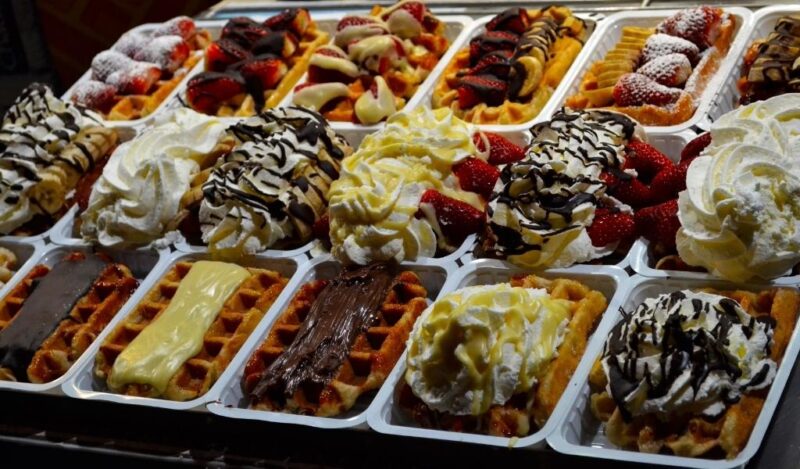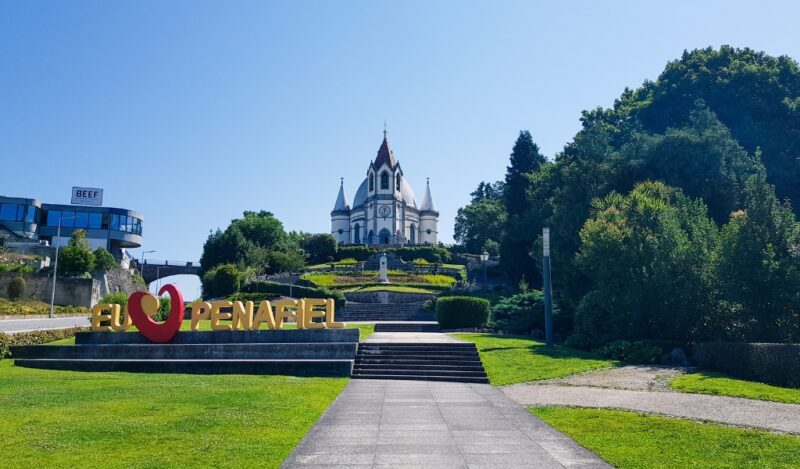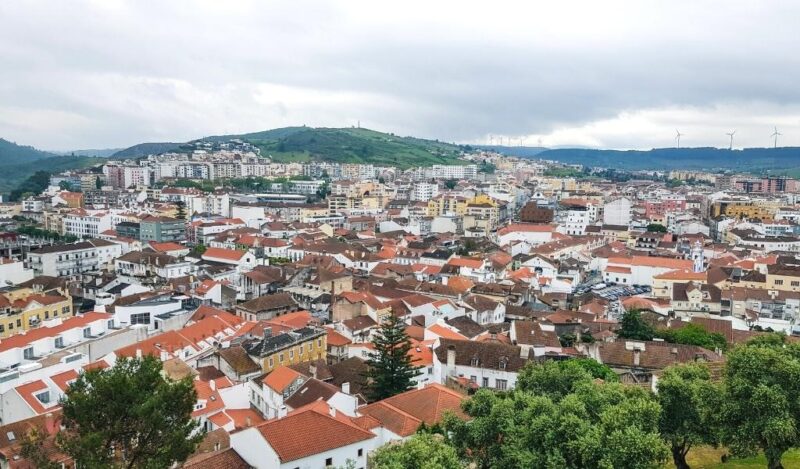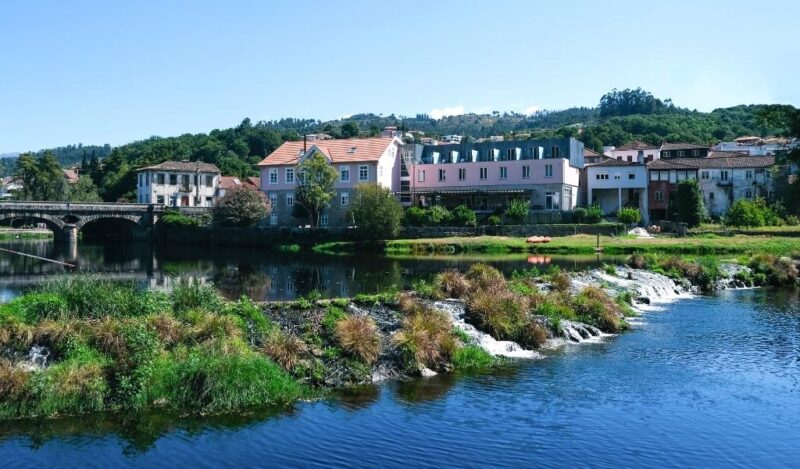Liège is a peculiar city in eastern Belgium and a short distance from the borders of two other European countries: the Netherlands and Germany. Located in the valley of the river Meuse, it has become an important municipality in Wallonia, the largest region in Belgium.
Currently, Liège is the main economic and cultural center in the province. In addition, the city is part of the Sillon industriel, Belgium’s former primary industrial network, which spans several cities and regions in the country.
So, do you want to know more about 1 Day In Liège: The Perfect Liège Itinerary? Keep reading!
This post may contain affiliate links, meaning I earn a small commission if you make a purchase, at no additional cost to you. Please read my disclosure & privacy policy for more information.
No time to read now? Pin it for later!


Brief History of Liège
The first traces and written records of Liège date from the time of the Roman Empire. A few centuries later, during the Middle Ages, the city was converted into an important religious center of the Catholic Church.
It seems hard to believe, but Liège was temporarily under Spanish rule in the 16th century and was later commanded by the Dutch in the early 19th century. Even so and with the advance of the Industrial Revolution, the city became a European exponent of the steel industry, that is, the branch of metallurgy that manufactures steel and cast iron.
At the same time, its walls and fortifications built over the centuries were crucial during the First World War, since they delayed by several days the advance of the German troops over Western Europe.
Visiting Liège
When I decided to visit this Belgian city, I confess that I underestimated the eventual need to create a tourist guide or even a simple itinerary. But the truth is that Liège is much more than an industrial urban center or a pleasant student city.
And although Liège is not considered an unmissable European destination, of breathtaking beauty, it manages to boast a mixture of tradition and innovation in its streets and squares. Strolling through its monuments and points of interest is an intriguing and peculiar experience, which I had never experienced elsewhere.
Sometimes, the city seemed a little confusing and somewhat random, I won’t lie to you. For example, parking your car can be relatively easy in the city center, with many parks and places available.
However, driving is another thing, since the traffic code rules are… well, ignored. For example, we say a bicycle crossing a roundabout, literally… through the middle of the roundabout!

The itinerary I drafted is perfect for a day outdoors so that you can enjoy the local history, culture, and cuisine!
Besides, you can easily do this itinerary on foot, without any schedules or worries. Whether you arrive in Liège by public transportation or by car, the most important places to visit are within walking distance of each other.
Liège Itinerary
Montagne de Bueren
Climbing the Bueren Mountain is an absolute must for all who visit Liège. This imposing staircase consists of 374 steps and certainly reveals the most pleasant view of the city.
If you stopped reading after the “374 steps” part, I get you. But think like this: you’ll eat so much and so well during your stay in Belgium, that it’s better to take the chance to gain an appetite (or burn some calories) by visiting this great attraction in Liège.

Also, in case you didn’t know, the Montagne de Bueren was ranked first in the list “The Most Extreme Staircases in the World” (2013) of The Huffington Post. Which makes the challenge so much more interesting, doesn’t it?
Twice a year, the steps of this staircase are honored in two major ceremonies. Therefore, it’s worth visiting in the summer, during the biennial event “Bueren en Fleurs”, which adorns the Montagne de Bueren with flowers and other plants of all kinds. Or, if you prefer, you can go there on the first Saturday of October, to the festival “La Nocture des Coteaux de la Citadelle”, and admire the thousands of decorative candles.
Une Gaufrette Saperlipopette
To taste the beloved artisanal Belgian sweets, all paths will lead to Une Gaufrette Saperlipopette! In this pastry, it is possible to taste the famous waffle (which comes from the Dutch, wafel), also known by the French spelling gauffre.

Owner of the Attestation d’Excellence TripAdvisor for five consecutive years, this original space also sells chocolates, pancakes, and other traditional sweets.
Claim your favorite treats and head to Market Square, to sit comfortably eating, while enjoying the city’s history and culture.
Place du Marché
The Market Square, in the historic center of Liège, is one of the oldest and most important squares in the city, along with the nearby Saint-Lambert Square. The origins of this square go back to the origins of the city itself. Nevertheless, a bombing ordered by King Louis XIV in 1691, dictated the destruction of the original square.
Nowadays, the Place du Marché is rebuilt in a classic style and houses three iconic monuments: La Violette (the City Hall building), the Fountain of Tradition, and a fountain called Perron de Liège. The square also includes very picturesque old houses and a section of restaurants, bars, and taverns, with cozy terraces.
Museums in Liège
Liège is a historical and cultural representation of the region and, as such, has several museums. Even though I didn’t have the opportunity to visit them, I leave you with a few examples in case you want a more complete visit:
- La Boverie, for Fine Arts
- Grand Curtis, for Archaeology and Decorative Arts
- Trèsor de Liège, for Sacred Art
- Archéoforum, for Archaeology
- Musée de la Vie Wallone, for Folklore
Other Places in Liège
To end this pleasant itinerary through Liège, I recommend other points that I passed, but which I was unable to enter since it was already late. These include the Royal Theater of Liège, which opened in 1820 and is home to the Royal Opera of Wallonia, one of the four official opera houses in Belgium.
Finally, you can visit the Church or Collegiate of Saint John, The Evangelist, also called Saint-Jean-en-l’isle, since in the past there was a small island on this site. Belonging to a group of seven collegiates in the city, this Roman Catholic church was built in the late 10th century.
Map of the Liège Itinerary
Share this blog post on your social media!
More Posts about Belgium
10 Best Places To Visit In Belgium (Besides Brussels)
The Best Of Belgian Cuisine: What To Eat And Drink In Belgium
1 Day In Liège: The Perfect Liège Itinerary
More Posts about Travel Itineraries
1 Day In Penafiel: The Perfect Penafiel Itinerary
1 Day In Torres Vedras: The Perfect Torres Vedras Itinerary
2 Days In Arcos De Valdevez: The Perfect Arcos De Valdevez Itinerary
What Photography Gear Do I Use?
- Camera Body: Fujifilm X-T4 Mirrorless
- Camera Lens: Fujinon XF 18-55 mm F2.8-4 R LM OIS
- Tripod: Manfrotto Compact Action
- Small Tripod: Manfrotto PIXI Mini
- Smartphone Adaptor: Manfrotto PIXI Clamp
- Memory Card: SanDisk 128GB Extreme PRO SDXC






